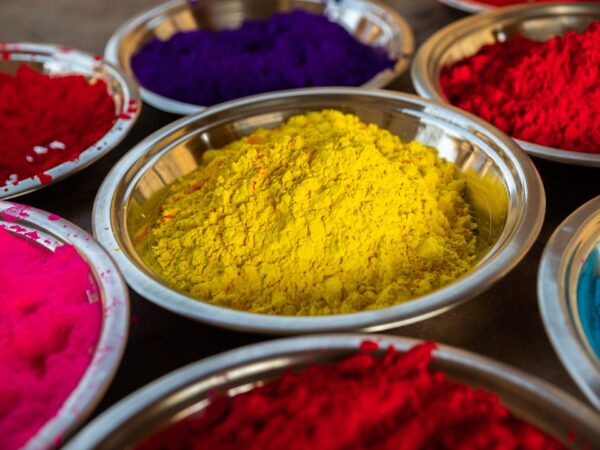
Combat Winter Dryness: Oily Skin? Try Winter Cream!
Winter can be a challenging time for our skin, as the cold weather and dry air can cause it to become dry, flaky, and irritated. While many people associate these issues with dry skin types, those with oily skin are not exempt from the effects of winter. In fact, winter can exacerbate oily skin concerns and lead to an increase in oil production. Understanding how winter affects oily skin and finding the right skincare products, such as winter creams, can help combat these issues and maintain a healthy complexion.
Key Takeaways
- Winter weather can have a drying effect on oily skin, leading to flakiness and irritation.
- Moisturizing oily skin in winter is important to maintain a healthy and hydrated complexion.
- Winter creams can help combat dryness in oily skin by providing lightweight hydration and nourishment.
- Look for key ingredients like hyaluronic acid and ceramides in winter creams for oily skin.
- Choosing the right winter cream for your oily skin type is crucial to avoid clogging pores or exacerbating oiliness.
Understanding the Effects of Winter on Oily Skin
Cold weather can have a significant impact on oily skin. When the temperature drops, our skin tends to produce less oil naturally. This may seem like a good thing for those with oily skin, but it can actually lead to an overproduction of oil as our skin tries to compensate for the lack of moisture. This excess oil can clog pores and lead to breakouts.
In addition to increased oil production, winter can also cause other common skin issues for those with oily skin. The dry air can strip the skin of its natural moisture, leading to dehydration and a compromised skin barrier. This can result in redness, irritation, and sensitivity. Furthermore, the combination of cold weather and indoor heating can cause fluctuations in humidity levels, further drying out the skin.
The Importance of Moisturizing Oily Skin in Winter
Contrary to popular belief, oily skin still needs moisture even in the winter months. Moisturizing is essential for maintaining a healthy complexion and preventing issues such as dryness, flakiness, and irritation. When our skin lacks moisture, it can trigger an overproduction of oil as a protective mechanism.
Moisturizing oily skin in winter helps to balance oil production and keep the skin hydrated without clogging pores or causing breakouts. It also helps to strengthen the skin barrier, which is crucial for protecting against external aggressors and maintaining overall skin health.
How Winter Creams Help Combat Dryness in Oily Skin
| Winter Creams | Benefits |
|---|---|
| Hydrate | Helps to replenish moisture in the skin, preventing dryness and flakiness. |
| Lock in Moisture | Forms a protective barrier on the skin, preventing moisture loss and keeping the skin hydrated for longer periods of time. |
| Non-Greasy | Winter creams formulated for oily skin are lightweight and non-greasy, providing hydration without clogging pores or causing breakouts. |
| Reduce Inflammation | Winter creams containing anti-inflammatory ingredients can help to soothe and calm irritated skin, reducing redness and inflammation. |
| Improve Skin Texture | Regular use of winter creams can help to improve the texture of oily skin, making it smoother and more supple. |
Winter creams are specifically formulated to provide intense hydration and nourishment to the skin during the colder months. These creams are typically thicker and richer in texture compared to regular moisturizers, making them ideal for combating dryness in oily skin.
Winter creams work by creating a protective barrier on the skin’s surface, sealing in moisture and preventing water loss. They often contain ingredients such as hyaluronic acid, glycerin, and ceramides, which are known for their hydrating properties. These ingredients help to replenish moisture levels in the skin and restore its natural balance.
Using winter creams on oily skin can help prevent dryness and flakiness while maintaining a healthy oil balance. It is important to choose a winter cream that is specifically formulated for oily skin to avoid clogging pores or causing breakouts.
Key Ingredients to Look for in Winter Creams for Oily Skin
When choosing a winter cream for oily skin, it is important to look for key ingredients that work well on oily skin in winter. Some of these ingredients include:
1. Hyaluronic Acid: This ingredient is a powerful humectant that attracts and retains moisture in the skin. It helps to hydrate oily skin without adding excess oil or clogging pores.
2. Niacinamide: Niacinamide is a multitasking ingredient that helps regulate oil production, reduce inflammation, and strengthen the skin barrier. It is particularly beneficial for oily skin types in winter.
3. Ceramides: Ceramides are naturally occurring lipids that help to strengthen the skin barrier and retain moisture. They are essential for maintaining healthy, hydrated skin.
4. Lightweight Oils: While it may seem counterintuitive to use oils on oily skin, lightweight oils such as jojoba oil or squalane can actually help balance oil production and provide hydration without clogging pores.
Choosing the Right Winter Cream for Your Oily Skin Type
When choosing a winter cream for oily skin, it is important to consider your specific oily skin type. Different oily skin types have different needs and concerns, so finding a winter cream that addresses those concerns is crucial.
For those with acne-prone oily skin, look for a winter cream that is non-comedogenic and oil-free. These creams should be lightweight and easily absorbed by the skin to avoid clogging pores. Ingredients such as salicylic acid or tea tree oil can also help to control breakouts.
If you have combination oily skin, look for a winter cream that provides balanced hydration without making the skin feel greasy. Opt for a lightweight formula that absorbs quickly and does not leave a heavy residue on the skin.
For those with oily skin that is also sensitive or prone to redness, choose a winter cream that is gentle and soothing. Look for ingredients such as chamomile or aloe vera, which have calming properties.
Tips for Applying Winter Cream on Oily Skin
To get the most out of your winter cream and avoid common mistakes, here are some tips for applying it on oily skin:
1. Cleanse your face thoroughly before applying the winter cream to ensure that your skin is free from dirt, oil, and impurities.
2. Use a small amount of the winter cream and gently massage it into your skin using upward motions. Avoid applying too much product, as this can lead to a greasy or heavy feeling.
3. Allow the winter cream to fully absorb into your skin before applying any makeup or sunscreen. This will ensure that the product is properly absorbed and does not interfere with the effectiveness of other skincare products.
4. If you find that your skin still feels greasy after applying the winter cream, blot away any excess oil with a clean tissue or blotting paper.
Incorporating Winter Creams into Your Skincare Routine for Oily Skin
To incorporate winter creams into your existing skincare routine for oily skin, follow these steps:
1. Cleanse your face with a gentle cleanser to remove any dirt, oil, or makeup.
2. Apply a toner or essence to balance the skin’s pH levels and prepare it for the next steps.
3. Apply a lightweight serum or treatment product that targets specific concerns, such as acne or hyperpigmentation.
4. Follow up with a small amount of winter cream, focusing on areas that tend to get dry or flaky.
5. Finish off with a lightweight sunscreen to protect your skin from harmful UV rays.
Other Skincare Products to Use in Conjunction with Winter Creams for Oily Skin
In addition to winter creams, there are other skincare products that work well in conjunction with them for oily skin in winter. These include:
1. Exfoliating Products: Regular exfoliation helps to remove dead skin cells and unclog pores, allowing the winter cream to penetrate more effectively. Look for gentle exfoliating products that contain ingredients such as salicylic acid or fruit enzymes.
2. Clay Masks: Clay masks can help absorb excess oil and impurities from the skin, leaving it feeling refreshed and balanced. Use a clay mask once or twice a week to help control oil production and prevent breakouts.
3. Oil-Control Products: If you find that your skin becomes excessively oily throughout the day, consider using oil-control products such as mattifying primers or setting powders. These products can help absorb excess oil and keep your skin looking matte.
Common Mistakes to Avoid When Using Winter Creams on Oily Skin
When using winter creams on oily skin, it is important to avoid common mistakes that can worsen oily skin concerns. Some of these mistakes include:
1. Using Heavy or Greasy Formulas: Avoid using winter creams that are too heavy or greasy, as they can clog pores and lead to breakouts. Look for lightweight formulas that are easily absorbed by the skin.
2. Overusing Products: Using too much winter cream can make your skin feel greasy and heavy. Use a small amount and gradually increase if needed.
3. Neglecting Sunscreen: Even in the winter months, it is important to protect your skin from harmful UV rays. Always apply a lightweight sunscreen after your winter cream to ensure proper sun protection.
Achieving a Healthy and Hydrated Complexion with Winter Creams for Oily Skin
By understanding the effects of winter on oily skin and incorporating the right skincare products, such as winter creams, into your routine, you can achieve a healthy and hydrated complexion even in the coldest months. Winter creams provide essential moisture to oily skin without clogging pores or causing breakouts. Look for key ingredients that work well on oily skin in winter, and choose a winter cream that is specifically formulated for your oily skin type. By following best practices for applying winter cream and avoiding common mistakes, you can maintain a balanced oil production and keep your skin looking healthy and radiant all winter long.
FAQs
What is winter cream for oily skin?
Winter cream for oily skin is a moisturizer specifically designed for people with oily skin during the winter season. It helps to hydrate the skin without making it greasy or causing breakouts.
Why do people with oily skin need a different cream for winter?
During the winter season, the air is drier and colder, which can cause the skin to become dehydrated. People with oily skin still need to moisturize, but they need a cream that is lightweight and non-greasy to avoid clogging pores and causing breakouts.
What ingredients should I look for in a winter cream for oily skin?
Look for ingredients like hyaluronic acid, glycerin, and ceramides, which help to hydrate the skin without making it greasy. Avoid heavy oils and butters, which can clog pores and cause breakouts.
How often should I use winter cream for oily skin?
You should use winter cream for oily skin twice a day, once in the morning and once at night, after cleansing your face.
Can winter cream for oily skin be used on other skin types?
Winter cream for oily skin is specifically designed for people with oily skin, but it can be used on other skin types as well. However, people with dry skin may need a heavier moisturizer during the winter season.


















